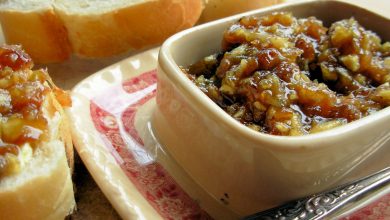A Different Kind of Vegetable Lasagna
A Different Kind of Vegetable Lasagna:
This variation of vegetable lasagna offers a unique twist on the classic dish. It’s characterized by its rich white style, which emphasizes creamy sauces and a variety of flavorful vegetables. Here’s a detailed breakdown of its history, components, preparation steps, and estimated preparation time:
History:
The history of lasagna dates back to ancient times, with its origins traced to the ancient Greeks and Romans. Over the centuries, various regions and cultures have developed their own versions of lasagna. The modern vegetable lasagna, with its emphasis on vegetables and creamy white sauces, is likely a more recent evolution of the traditional dish. Its exact origin is not well-documented, but it’s a creative adaptation that caters to those who prefer a lighter and vegetarian-friendly option.
Components:
- Vegetables: A variety of vegetables are used in this dish. Common choices include zucchini, eggplant, spinach, mushrooms, and bell peppers.
- White Sauce: The rich white sauce is a key component. It’s typically made from a roux (butter and flour) combined with milk or cream, creating a creamy and luxurious texture.
- Cheese: A mixture of cheeses, such as ricotta, mozzarella, and Parmesan, is layered throughout the lasagna for added flavor and creaminess.
- Lasagna Noodles: No lasagna is complete without layers of lasagna noodles, which provide structure and texture to the dish.
- Seasonings: Garlic, onion, herbs like basil and oregano, salt, and pepper enhance the flavor profile.
Preparation Steps:
- Prepare the Vegetables: Slice the vegetables into thin, even slices. You can grill, roast, or sauté them for added flavor.
- Make the White Sauce: In a saucepan, melt butter, then add flour to create a roux. Gradually whisk in milk or cream, and cook until the sauce thickens. Season with salt, pepper, and herbs.
- Mix the Cheese Filling: In a bowl, combine ricotta cheese with grated mozzarella, Parmesan, minced garlic, and chopped fresh herbs.
- Assemble the Lasagna: Start by spreading a thin layer of white sauce on the bottom of a baking dish. Layer with lasagna noodles, then spread a portion of the cheese mixture, followed by a layer of vegetables. Repeat the layers until all components are used, finishing with a layer of white sauce on top.
- Bake: Cover the lasagna with foil and bake in a preheated oven according to the noodle package instructions. Uncover during the last few minutes to allow the top to brown.
- Rest and Serve: Allow the lasagna to rest for a few minutes before slicing and serving. This helps the layers set and makes it easier to serve.
Estimated Preparation Time:
The time needed to prepare this vegetable lasagna can vary based on your cooking experience and kitchen efficiency. On average, it might take approximately 1.5 to 2 hours from start to finish, including preparation, assembly, baking, and resting.
Remember that cooking times can vary, so it’s a good idea to keep an eye on the lasagna as it bakes to ensure it’s cooked to your desired level of doneness. Enjoy your unique and delicious vegetable lasagna creation!
Nutrition Facts and Health Information for a Different Kind of Vegetable Lasagna:
Nutrition Information (Per Serving – Serving size may vary):
- Calories: Depending on serving size and ingredients used, approximately 250-350 calories.
- Total Fat: Varies, with a significant portion coming from cheese and white sauce. Approximately 10-15g.
- Saturated Fat: Depending on cheese and sauce, around 5-8g.
- Cholesterol: Around 20-30mg, primarily from cheese and dairy-based sauces.
- Sodium: Varies, but can range from 400-800mg due to cheese, sauces, and salt used.
- Carbohydrates: Approximately 30-40g, with variations based on pasta and vegetable content.
- Dietary Fiber: Around 4-6g, depending on vegetable content.
- Sugars: Typically 4-6g, mainly from lactose in dairy ingredients and natural sugars in vegetables.
- Protein: About 12-15g, with contributions from cheese, vegetables, and pasta.
Health Information:
- Rich in Vegetables: This vegetable lasagna variant offers a good source of various vegetables, contributing essential vitamins, minerals, and dietary fiber.
- Dairy Nutrients: Dairy-based components like cheese and white sauce provide calcium for bone health and protein for satiety.
- Moderation: While vegetable lasagna can be nutrient-dense, portion control is important due to potential calorie, fat, and sodium content.
- Dietary Considerations: The dish may be suitable for vegetarians, but it’s essential to consider lactose intolerance or dairy allergies when using cheese and cream-based sauces.
- Fiber Intake: With vegetables and whole wheat pasta, this dish can support a healthy digestive system due to its dietary fiber content.
- Nutritional Balance: To enhance nutritional value, consider using whole wheat pasta, low-fat cheese options, and making a well-balanced meal with a variety of food groups.
Note: Nutrition values can vary based on specific ingredients and portion sizes used. It’s advisable to calculate nutrition based on the exact ingredients and quantities you use to get accurate information for your version of the dish.



